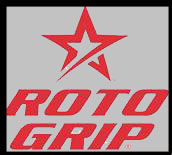 |
|||||||
|
|
Phone 612-423-2102 612-866-7577 E-mail TaoAthletes@aol.com Website Past Articles 9-6-07 Ball Weight and Fit For The Youth Bowler
Becoming involved with youth bowlers as a volunteer coach is a great way for many of us to give something back to the sport that we love. One of the first responsibilities of a youth coach is to help determine the proper weight for the youth bowler to use. Most of us have probably heard of the 10 percent rule, where you start by choosing a ball that is approximately 10 percent of the bowler’s weight. While this might be an ok starting point, it doesn’t take into account the athleticism of the individual bowler. I have seen 80-pound children who can comfortably roll 10 pound balls and I have seen heavier children who can’t come close to being able to handle a ball that is 10 percent of their weight. It also might not be appropriate to ask a young person what their weight is, as it could be a sensitive topic and potentially embarrassing if they can’t handle a ball that is 10 percent of their weight. I believe a much better and easier way to determine proper ball weight is through two simple tests. The first test begins by putting the bowler in an athletic body position. Have the bowler stagger their feet, at least heel toe distance apart with the sliding foot forward and 80 percent of their body weight on the sliding leg. Now have the bowler grasp a ball underneath with both hands and hold the ball close to the body. Now have them move the ball forward in front of their body and hold it for five seconds. The bowler should be able to hold the ball without excess effort; otherwise the ball is too heavy. Begin with a ball you are confident the bowler can handle, and than increase the weight by one pound. The second test begins with the bowler in the same staggered stance. Now take a ball and place it in a Buff A Ball bag. Start with the ball down by the bowler’s side and than have them gently swing the ball back and forth. Make sure they are swinging from their shoulder, with a slight resistance from the shoulder. Don’t let the ball go any higher than the bowlers waist in the backswing or any farther forward than just past the knee on the forward swing. If there is a noticeable effort from the bowler to keep the shoulder up or the ball appears to be swinging the bowler, the ball is too heavy. Well meaning parents often will want their children to roll balls that are too heavy for them, thinking they will grow into them. Performing these two simple tests will usually show the parent the proper weight ball for their child, and than I will explain to them that if they roll anything heavier they will have a very difficult time learning proper fundamentals and also potentially put their body at risk of injury. One of the most often asked questions I receive about youth bowlers, is when to put them into a fingertip grip. When I first started coaching, I had a lot of coaches tell me that they thought their youth bowlers had to be of a certain age or average level for them to go to a fingertip grip. It has been my experience, that neither of these factors has any bearing on when I put a youth bowler into a fingertip grip. I have put children as young as six into a fingertip grip and have had teenagers who average 160 stay in a conventional grip. The biggest determining factor in deciding fingertip versus conventional grip for me is the bowler’s athleticism and the ability to roll the ball forward. So when I see a youth bowler who can roll the ball forward somewhat consistently, I will than approach both the parent and the bowler and talk to them about the advantage of going to a relaxed fingertip grip. Generally speaking this occurs after a child has bowled for a couple of years and usually around the ages of 12 to 14. We have around 50 bowlers in our youth leagues that are between six and eleven years old. Out of those 50 bowlers, we will usually have between five to ten bowlers who are in relaxed fingertip grips. We have rarely had a youth bowler struggle or seen their average go down when switching them to a fingertip grip. Most often, their averages immediately go up because of the better ball roll. The key to success is to put them into the proper hand position and give them the proper drills. Most youth bowlers are not strong enough to “stay behind the ball”. We start most of our youth bowlers with their thumbs more at 9:00 o’clock (RHB) 3:00 (LHB). We give them the image of holding a cup of water and keeping their hand in that position throughout the release. We keep empty cups in the settee area for the bowler to hold and swing in between deliveries, so they can develop the feeling of the proper hand position. To keep the bowler from overturning the ball we will either place a piece of tape on the back of the hand, or draw a smiley face in the webbing of the hand next to the thumb. The idea is to always see the smiley face, but not the piece of tape on the back of the hand at the release. It’s obvious that youth bowlers are our future, and I believe that spending a little time working with young people can be one of the most rewarding and positive experiences you will ever have. If you have any questions or comments about working with youth bowlers, or would like some more information on other tools and drills that we use, please call or e-mail me anytime.
|





